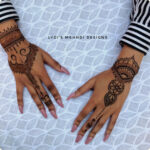Thinking about getting inked but wincing at the thought of the needle? You’re not alone! The question of tattoo pain is universal, especially for first-timers. Let’s be real: tattoos involve needles piercing your skin, so discomfort is part of the process. However, the good news is that pain levels vary significantly depending on where you choose to get tattooed. If you’re looking to minimize the ouch-factor, knowing the less painful tattoo spots is your first step to a smoother tattoo experience.
While the myth of painless tattoos is quickly busted (sorry to any fibbing friends!), understanding why some areas hurt less is key. Generally, the least sensitive spots are those with more fat, thicker skin, and fewer nerve endings. Conversely, the most painful areas tend to be bony, with thin skin and a high concentration of nerves.
To guide you in choosing your ideal, less-painful canvas, we’ve compiled insights from seasoned tattoo enthusiasts and our team at tattooat.com. Consider these locations for a potentially more comfortable tattoo journey:
- Forearms: Consistently ranked as the gentlest spot, the forearm is a popular choice for good reason.
- Outer Upper Arms: The fleshy outer part of your bicep offers a good cushion and fewer nerve endings compared to the inner arm.
- Outer Shoulders: Similar to the outer arm, the shoulder’s outer area provides a decent layer of muscle and fat.
- Outer Upper Thighs: Another fleshy area, the outer thigh typically experiences less intense pain.
- Calves: With muscle and fat, the calves are generally considered a moderate to low pain area.
- Lower Back: For many, the lower back is surprisingly less sensitive, often due to thicker skin and fewer nerve endings in this region.
If you’re a tattoo newbie, selecting one of these areas can definitely ease you into the world of ink. Remember though, pain is subjective. While these are generally considered less painful, individual experiences can vary. Some people even report less pain on areas like shins or scalps – proving everyone’s pain perception is unique! However, for a statistically gentler start, the forearm remains the champion of least painful tattoo locations.
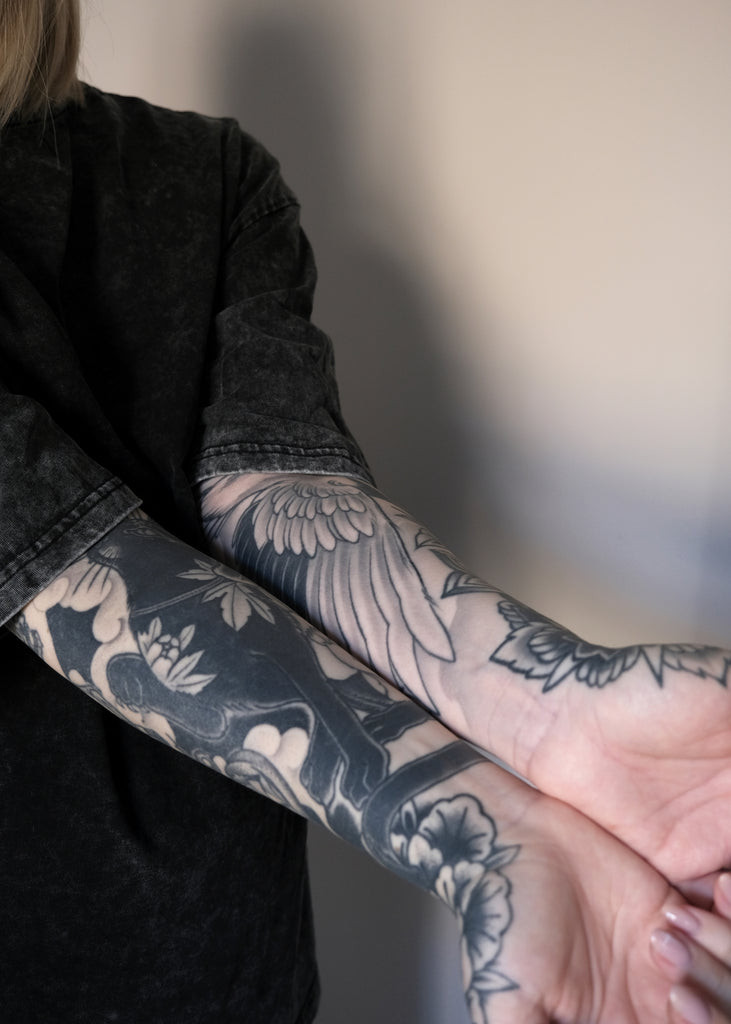 Forearm tattoos
Forearm tattoos
Forearm tattoos are widely recognized as one of the least painful areas for tattooing, making them an excellent choice for those concerned about discomfort.
If you’re still unsure about the potential pain of a specific location, here’s a pro-tip from Mikkel Elkjaer, Creative Director at Stories & Ink: “Pinch yourself where you’re planning to get tattooed. This gives you a basic idea of the sensitivity of that area.”
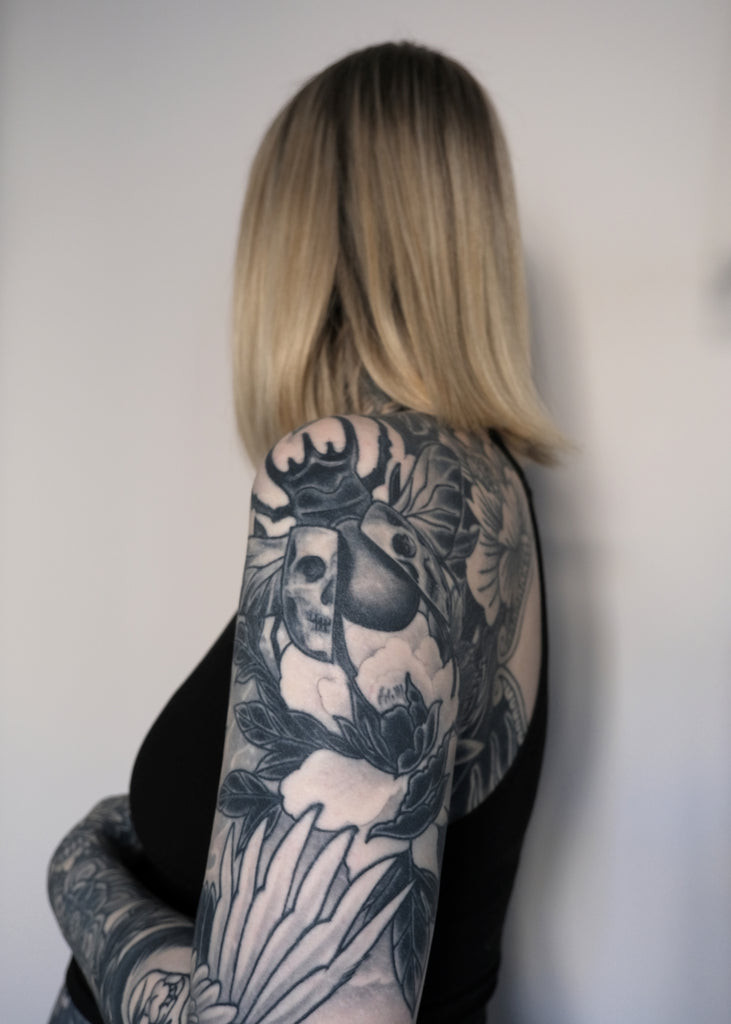 Upper arm tattoos
Upper arm tattoos
Tattooing the outside of the upper arm is generally considered less painful due to the presence of muscle and fat, offering a more comfortable experience.
Decoding Tattoo Pain: What Really Influences It?
Pain tolerance is personal, and your tattoo experience is shaped by a mix of factors. Let’s delve into what can influence how much a tattoo might hurt:
Age and Tattoo Pain
Interestingly, some research hints that pain sensitivity may decrease as we age. This suggests older individuals might perceive tattoo pain as less intense. However, anecdotal evidence from tattooed individuals doesn’t consistently support this. Many older tattoo enthusiasts find it harder to endure longer sessions, although individual experiences vary greatly. If you have tattooed elders in your life, their insights on tattoo pain could be fascinating!
Biological Sex and Pain Perception
Studies suggest potential differences in pain perception based on biological sex. Some evidence indicates that individuals assigned female at birth may experience “greater pain intensity, lower thresholds, and lower tolerance to experimentally induced pain.” However, this is a complex area requiring more extensive research before definitive conclusions can be drawn.
For menstruating individuals, hormonal fluctuations during the menstrual cycle can also influence pain sensitivity. Changes in hormones may affect how pain is perceived, potentially making tattoos feel more painful during certain phases of the cycle. Understanding your cycle and its potential impact on pain tolerance is something to consider when scheduling your tattoo appointment.
Tattoo Technique Matters
The style of tattoo you choose can also impact pain levels. Bold line, color-packed traditional tattoos are often reported to be more painful than delicate fineline pieces. Conversely, hand-poked tattoos, applied manually dot by dot, are often described as gentler and sometimes even relaxing by those receiving them, while others find them more time-consuming and thus, more painful. The technique’s intensity and duration play a role in the overall pain experience.
Time Under the Needle
Size definitely matters when it comes to tattoo pain. Smaller tattoos are generally less painful simply because they take less time to complete. Longer tattoo sessions lead to increased skin trauma and irritation, intensifying discomfort. Additionally, maintaining a comfortable position for extended periods can become challenging, further amplifying perceived pain.
The Tattoo Artist’s Touch
The experience of your tattoo artist also plays a role. Some artists are known for a “heavy hand,” while others are gentler. Factors like frequent “dry wiping” (cleaning the area without enough lubricant) can also increase irritation and pain. If possible, seeking recommendations or reviews about an artist’s technique can help you anticipate the potential pain level.
Psychological Expectations
Your mindset going into a tattoo session can significantly influence your pain perception. As tattoo collector Alice Snape (@alicecsnape) shared, “I didn’t hate [getting] my bum [tattooed]. I’d heard it was the most painful place ever, so maybe I was just pleasantly surprised it didn’t live up to those expectations.” If you anticipate extreme pain, you might experience it more intensely. Conversely, a more relaxed and prepared mindset can sometimes lessen perceived pain.
Your Physical State on Tattoo Day
Your overall well-being on the day of your appointment directly affects your pain tolerance. Being tired, hungry, dehydrated, or stressed can heighten pain sensitivity. Artist Hannah Kay (@ohkay_dohkay) emphasizes, “If I haven’t had enough sleep or I can’t manage a good breakfast before a tattoo I can definitely feel the difference in my pain tolerance.” Ensuring you are well-rested, fed, and hydrated will contribute to a more comfortable tattoo experience.
Tattooing Over Scars or Stretch Marks
Tattooing over scarred skin introduces another layer of complexity to pain perception. The depth and size of the scar are key factors. Scar tissue can sometimes be more sensitive than undamaged skin. Similarly, skin with stretch marks can also exhibit increased sensitivity. Consulting with your tattoo artist about tattooing over scars or stretch marks will provide insights into potential pain levels and tattoo suitability.
Cover-Up Tattoos
Cover-up tattoos, designed to conceal older tattoos, can sometimes be more painful. If the underlying skin is scarred from the previous tattoo, it can contribute to increased pain. However, individual experiences vary, and some find cover-ups no more painful than getting a fresh tattoo on virgin skin.
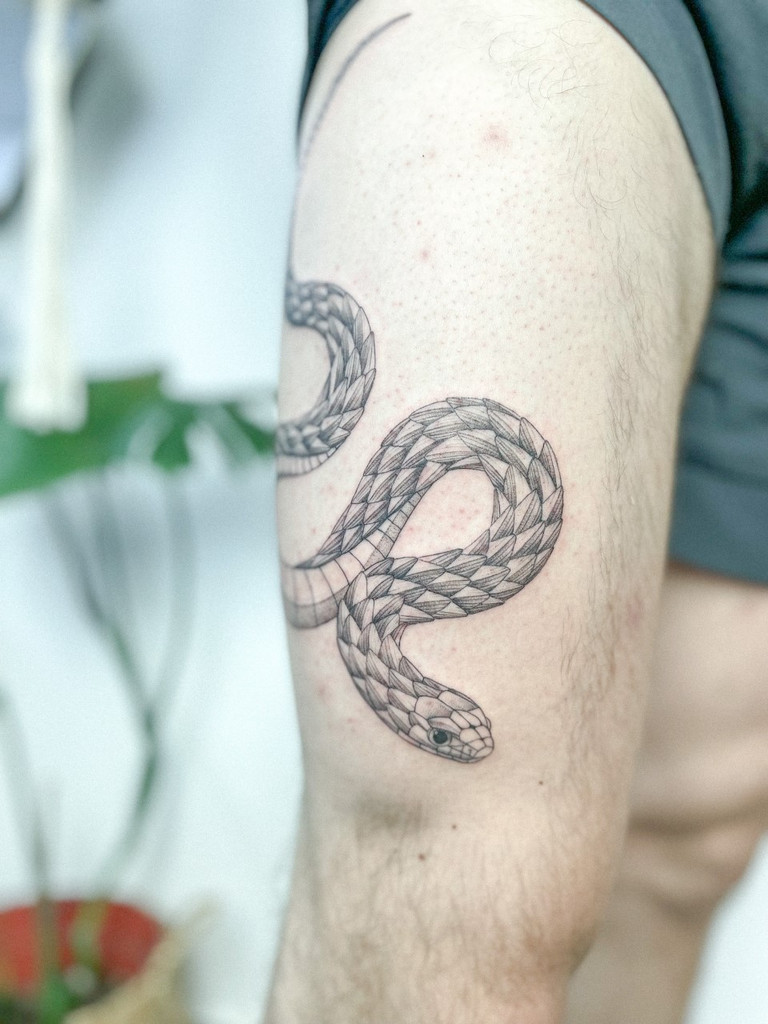 Thigh tattoo
Thigh tattoo
The outer thigh is frequently cited as a less painful location for tattoos, often favored for larger designs due to its ample surface area and relative comfort.
Gender and Tattoo Pain: Are There Differences in Least Painful Spots?
While pain perception is individual, there are general trends regarding less painful tattoo spots that are often discussed in relation to gender.
Least Painful Tattoo Spots for Women
For individuals assigned female at birth, the least painful areas often align with those generally considered less sensitive: areas with fewer nerve endings and more fat or muscle padding. The outer shoulders and outer upper thighs are frequently mentioned as less painful options.
Least Painful Tattoo Spots for Men
For individuals assigned male at birth, the arm, particularly the forearm and outer upper arm, is often cited as the least painful location. This makes these areas ideal for larger pieces like half or full sleeves, allowing for extensive artwork with potentially minimized discomfort.
Making Your Tattoo Experience More Comfortable
Beyond choosing a less painful spot, there are steps you can take to manage tattoo pain:
- Prioritize Preparation: Get adequate sleep, eat a good meal, and stay hydrated before your appointment.
- Communicate with Your Artist: Don’t hesitate to discuss pain concerns with your tattoo artist. They can offer advice and adjust their technique if needed.
- Consider Numbing Creams: Over-the-counter numbing creams can be applied before your appointment to reduce sensation, but always consult with your artist beforehand as some creams can affect the skin and ink absorption.
- Take Breaks: For longer sessions, don’t hesitate to request breaks to stretch, hydrate, and compose yourself.
- Focus on Breathing: Deep, controlled breathing can help manage discomfort during the tattooing process.
Before your appointment, consider prepping your skin with a quality moisturizer like our Daily Moisturiser. Hydrated and nourished skin can be a better canvas for tattooing. Just remember to skip moisturizer on the day of your appointment to ensure the stencil adheres properly. And for optimal healing, explore our range of tattoo aftercare products.
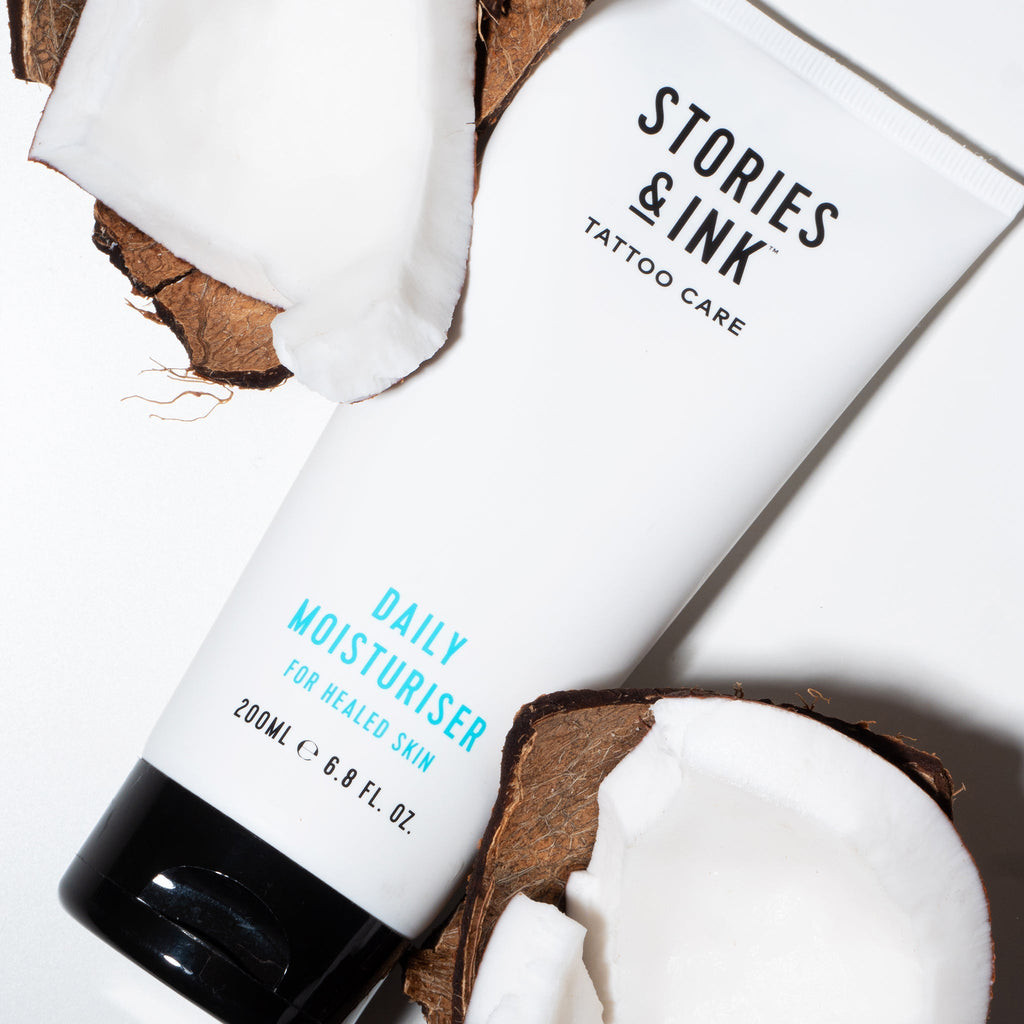 Stories & Ink Daily Moisturiser
Stories & Ink Daily Moisturiser
Stories & Ink’s Daily Moisturiser is recommended to hydrate and nourish skin in preparation for tattooing, contributing to a healthier and more comfortable tattoo experience.
For a comprehensive guide on pre-tattoo preparation, read our detailed preparation guide. By choosing a less painful location and taking proactive steps to manage discomfort, you can pave the way for a more enjoyable and less daunting tattoo journey.
